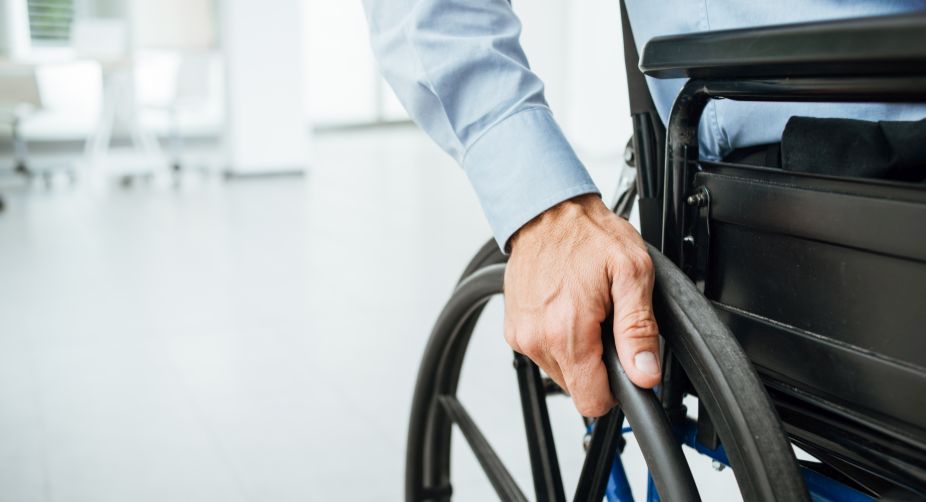The World Health Organisation/World Bank report on disability worldwide states that over a billion people, about 15 per cent of the world’s population, are living with some form of disability and that the majority of this population lives in developing nations, where necessary supports and services are at a minimum, if they exist at all. People with disabilities living in rural areas are among the poorest segments of the population; they are highly marginalised and lack access to services. Evidence has shown that across the globe, people with disabilities are more likely to experience economic and social disadvantages.
In general, women with disabilities experience a higher level of discrimination than disabled men. In developing countries like Nepal, indicators of education, employment, income, social security and medical expenditure for persons with disabilities show consistent gender inequalities. In addition, the impact of disability on women is not only evident in relation to women who are themselves disabled but also in relation to the role of women as mothers. Being a woman indicates an increased set of barriers to access and participation on various levels. The situation of women who have to cope with disabled children is even worse.
According to the United Nations, 80 per cent of the 650 million people with disabilities worldwide live in developing countries, and of these some 426 million live below the poverty line, often representing the 15 to 20 per cent most vulnerable and marginalised poor in such countries.
The United Nations Convention on the Rights of Persons with Disabilities (UNCRPD) encourages communication between and among states in co-operation with regional and inter-governmental organisations and civil societies in order to, amongst other things, ensure international development programmes are inclusive of and accessible to people with disabilities, facilitate capacity-building and the sharing of best practices, co-operate in research, share information, and provide economic and technical assistance.
Article 32 of the UNCRPD is dedicated to international co-operation and highlights action- oriented measures which states can undertake to support inclusive development. The Article ensures that development programmes become inclusive and accessible to persons with disabilities, putting to bed the idea that the only way to increase the wealth of disabled people is by focusing on disability specific programmes.
Disability and poverty are inextricably linked. For example, poverty increases vulnerability to disability through poor nutrition, lack of access to health care, greater exposure to violence and unintentional (accidental) injuries, lack of knowledge of prevention and so on. Conversely, disability results in vulnerability to poverty because of the costs associated with disabilities, discrimination in the labour market, barriers related to access to education and assistive devices, etc. In developing countries, the relationship between disease and disability has been compounded by HIV/AIDS. Of the 40 million people estimated to be living with HIV/AIDS, 38 million (95 per cent) live in developing countries.
Natural disasters and conflict are also important causes of disability, especially in developing countries where the level of conflict and violence is often high. In conflicts, both combatants and civilians are at risk, both during active conflict and after such conflicts. Disabled people are also likely to have lower educational and literacy levels than the rest of the populations. For example, in the Nepali context, one of the key challenges is that the meaning and distinction between inclusive education, integrated education and special needs education is often misshapen. Teachers and school administrations are not fully aware of the philosophy supporting an inclusive education system. The government of Nepal is also failing to ensure an inclusive education system for girls with all types of disabilities living in rural Nepal.
The employment rate of persons without disabilities compared to persons with disabilities is significantly high. Employers are hesitant to employ persons with disabilities for various reasons, including their fear of having to incur additional costs to support their employment as well as the assumption that persons with disabilities are not as productive as their able-bodied counterparts. To make things worse, only those with strong political links have access to employment and other opportunities.
People with disabilities are often troubled by additional costs resulting from disability, which include special medical care, rehabilitative and restorative equipment and services, providing for special education needs, costs incurred for, or by, care providers, as well as costs related to marginalisation from services and social activities. For example, public transport often does not provide for the needs of disabled people.
Thus, disabled people are poorer than the rest of the population. The education and employment rate for disabled people are usually lower, and both employment and income appear to be negatively associated with the severity of the disability. There are strong associations between being poor, being out of work, having low educational qualifications and the risk of developing long term health problems.
The Kathmandu Post/ANN.












